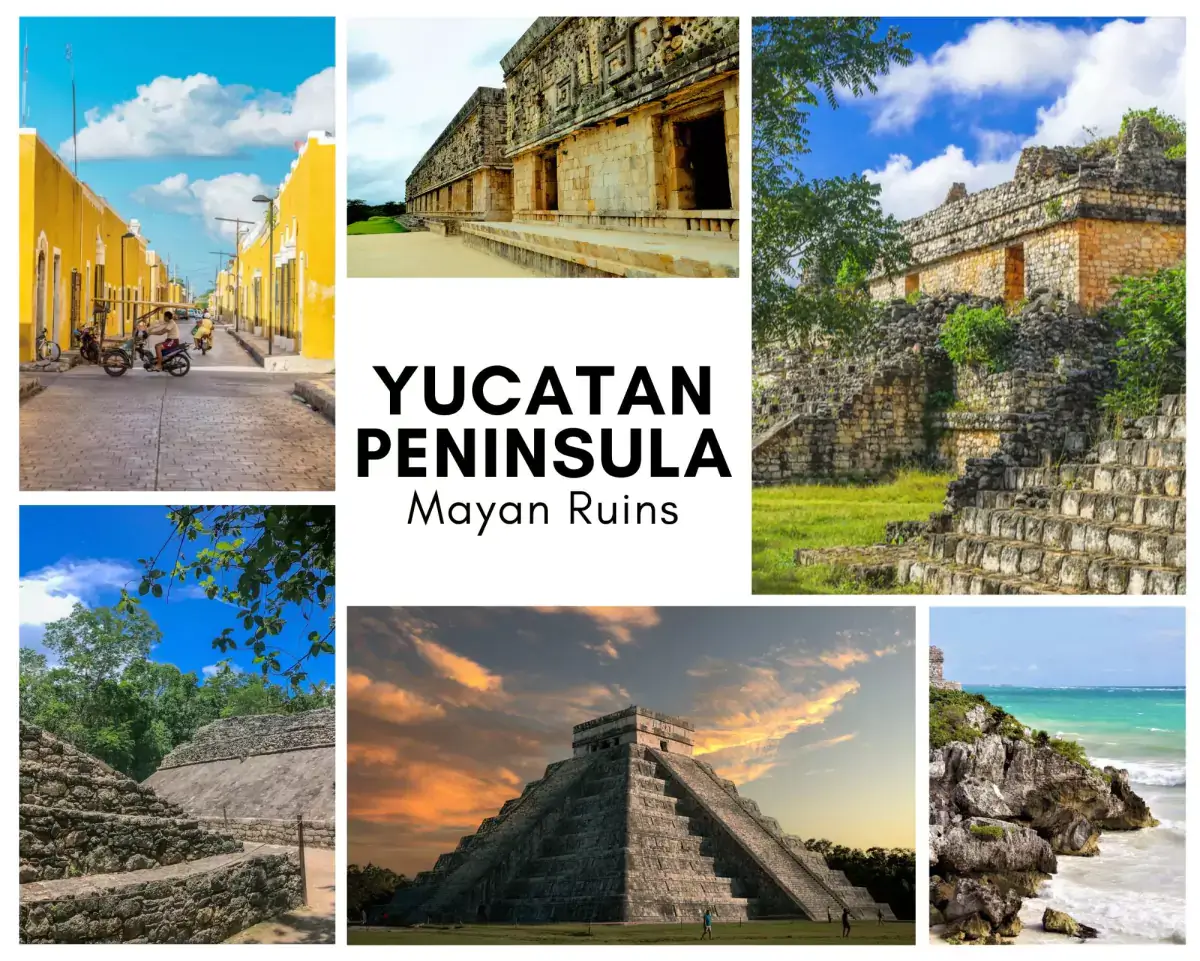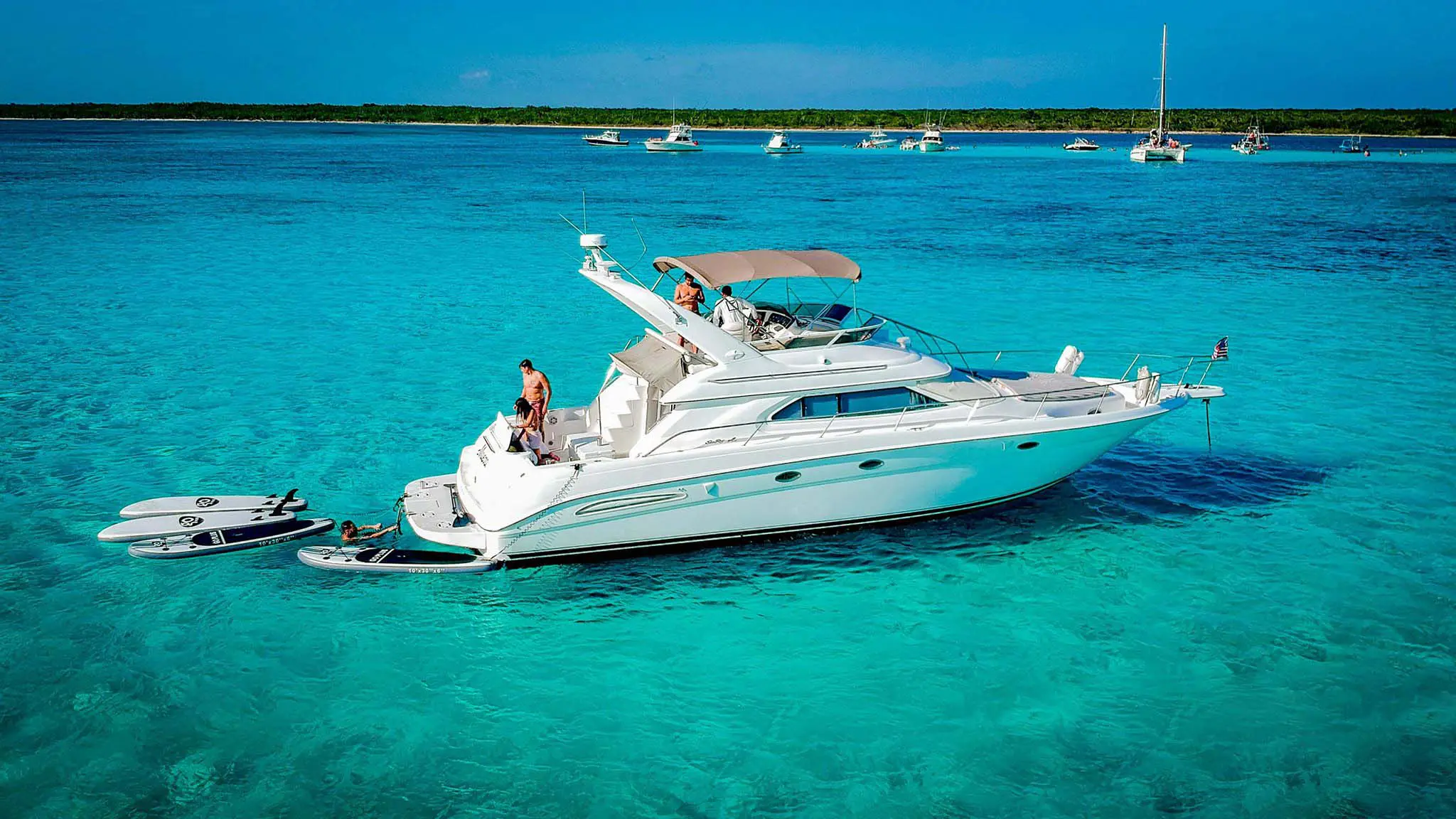The Yucatan Peninsula, a storied region in southeastern Mexico, offers a unique tapestry of cultural history, woven with the threads of the ancient Mayan civilization. The area is filled with majestic ruins that speak volumes about the Mayans’ architectural prowess, deep spiritual beliefs, and profound understanding of astronomy.
H2OH is here to guide you through 10 of the most outstanding Mayan ruins on the Yucatan Peninsula, a must-visit for history enthusiasts and curious travelers alike in 2024.
Introduction to the Mayan Wonders of the Yucatan
The Yucatan Peninsula has always been a beacon for explorers seeking to unearth the mysteries of the Mayan civilization. These Mayan ruins of Yucatan serve not just as relics of the past but as living museums that continue to educate and fascinate.
The Historical Significance of Mayan Ruins
Each Mayan ruins in Yucatan have a story, a purpose, and a place in the grand chronology of Mayan history. They provide insights into the societal structure, religious practices, and the day-to-day life of a civilization that thrived for thousands of years.
You can easily explore these ruins by booking a boat rental in Playa del Carmen.
Why the Yucatan Peninsula is a Hub for Mayan Heritage
Geographically blessed, the Yucatan Peninsula housed an advanced civilization adept in the arts, mathematics, and astronomy. The Yucatan peninsula Mayan ruins here are among the most well-preserved and architecturally advanced of their kind.
The Top 10 Must-See Mayan Ruins in the Yucatan Peninsula
The Yucatan Peninsula is not just a tropical paradise but also a sprawling canvas of history, with ancient Yucatan peninsula ruins dotting the landscape as far as the eye can see. Here are the top 10 Mayan ruins that are a must-visit for anyone looking to unravel the mysteries of the past and witness the grandeur of the Mayan civilization.
1. Chichen Itza: The Iconic Wonder
![]()
Chichen Itza, the most famous of all Mayan ruins, stands in silent testament to a complex society that once dominated the region. Its iconic pyramid in Yucatan, the Temple of Kukulcan, also known as El Castillo, is a marvel of astronomical precision, with its shadows during the equinoxes forming the illusion of a serpent slithering down its steps. The Great Ball Court adjacent to the pyramid is another awe-inspiring site, resonating with the echoes of a game that had religious and ceremonial significance.
2. Tulum: Where History Meets the Sea
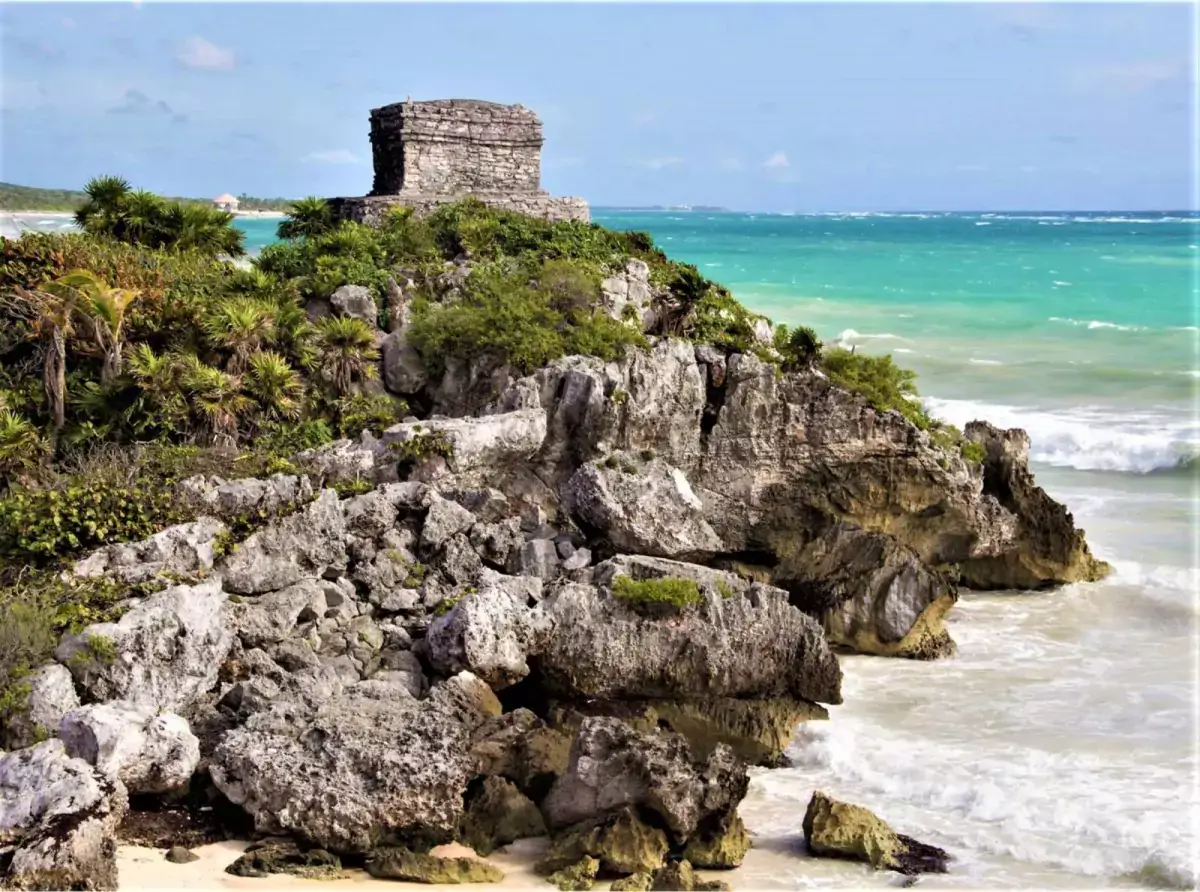
With a backdrop of the azure Caribbean Sea, Tulum offers one of the most picturesque settings of any Mayan site. This walled city was one of the last to be built by the Maya and managed to survive about 70 years after the Spanish began occupying Mexico. Its most famous landmark, El Castillo, stands on a rocky cliff above white sandy beaches and turquoise waters, serving as a lighthouse for ancient mariners. Taking a rented yacht in Riviera Maya can help you extensively explore Tulum!
3. Coba: The Ancient Network of Stone Causeways
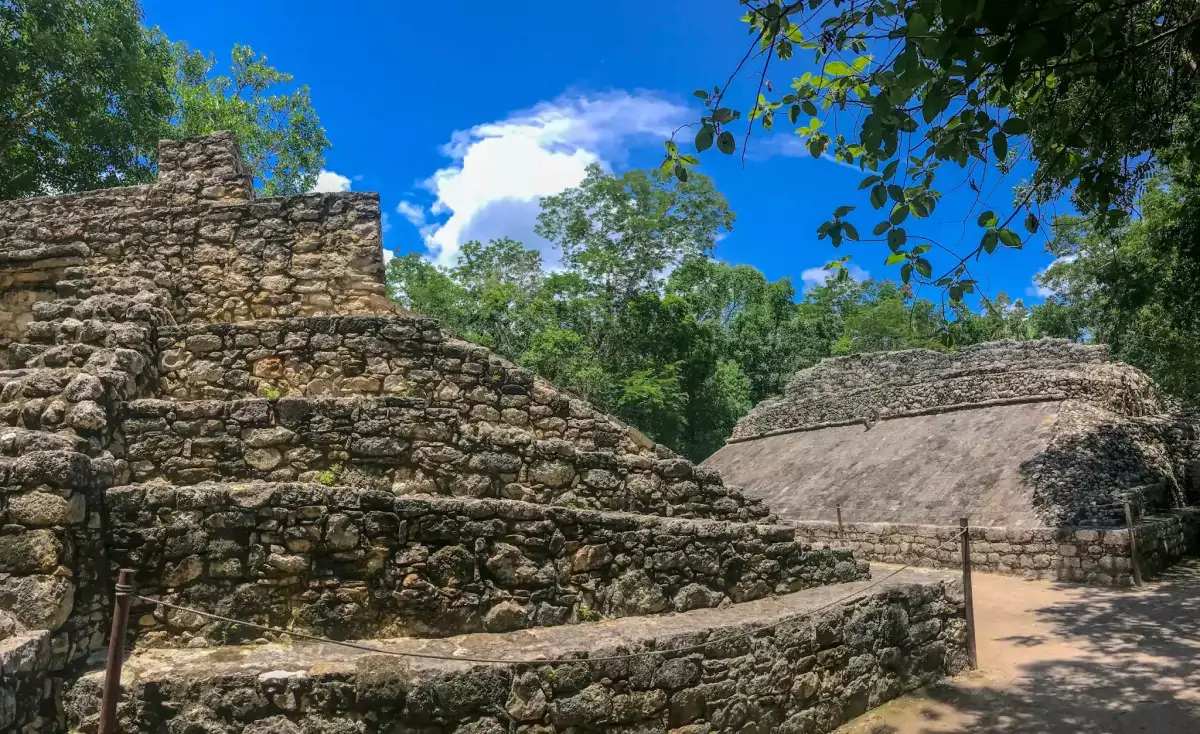
Hidden within the dense Yucatan jungle, Coba is a vast, partly excavated city known for its network of sacbeob (white roads) that once linked the city to other Mayan locales. The Nohoch Mul Pyramid, the tallest in Yucatan, offers a panoramic view of the surrounding forest and the lagoons that were the lifeblood of this once-thriving city.
4. Uxmal: The Architectural Marvel
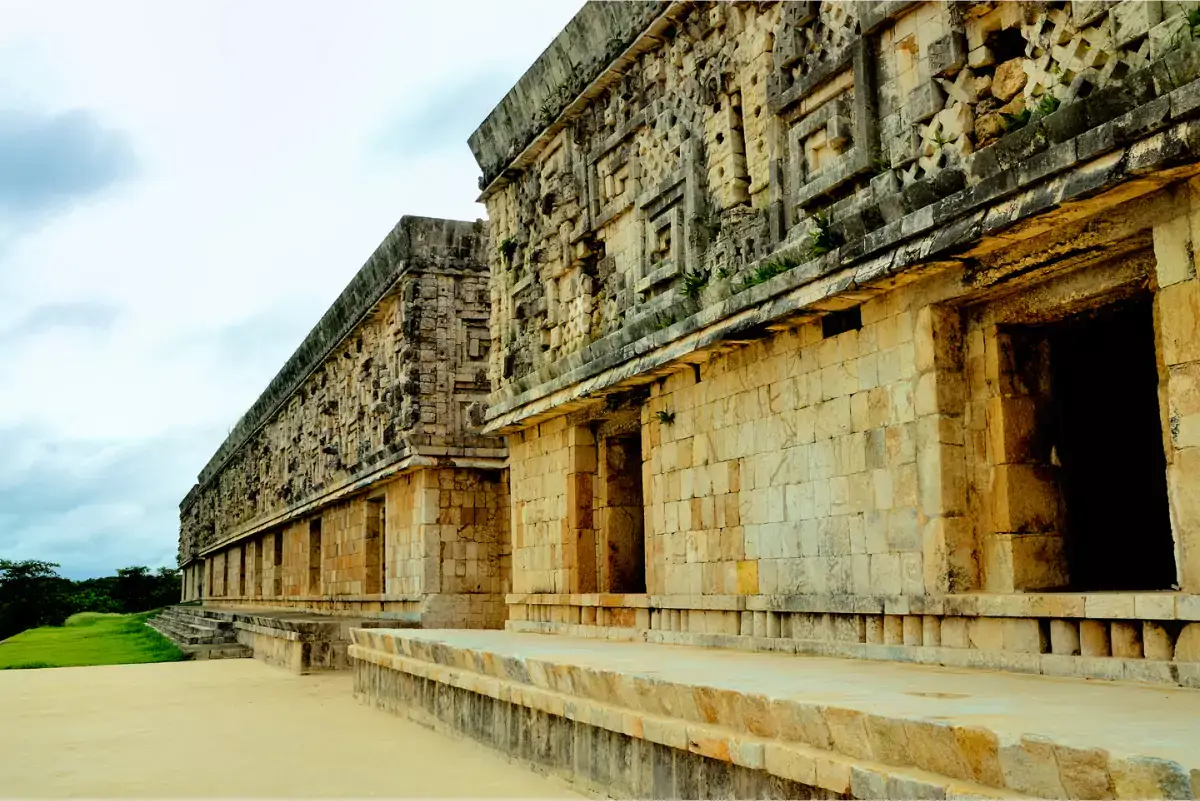
Renowned for its magnificent architecture, Uxmal is one of the most well-preserved Mayan sites. The Pyramid of the Magician, with its unusual rounded sides, steep stairway, and impressive height, dominates the ceremonial center. This pyramid, according to legend, was built in a single night by a dwarf king.
5. Ek Balam: The Black Jaguar City
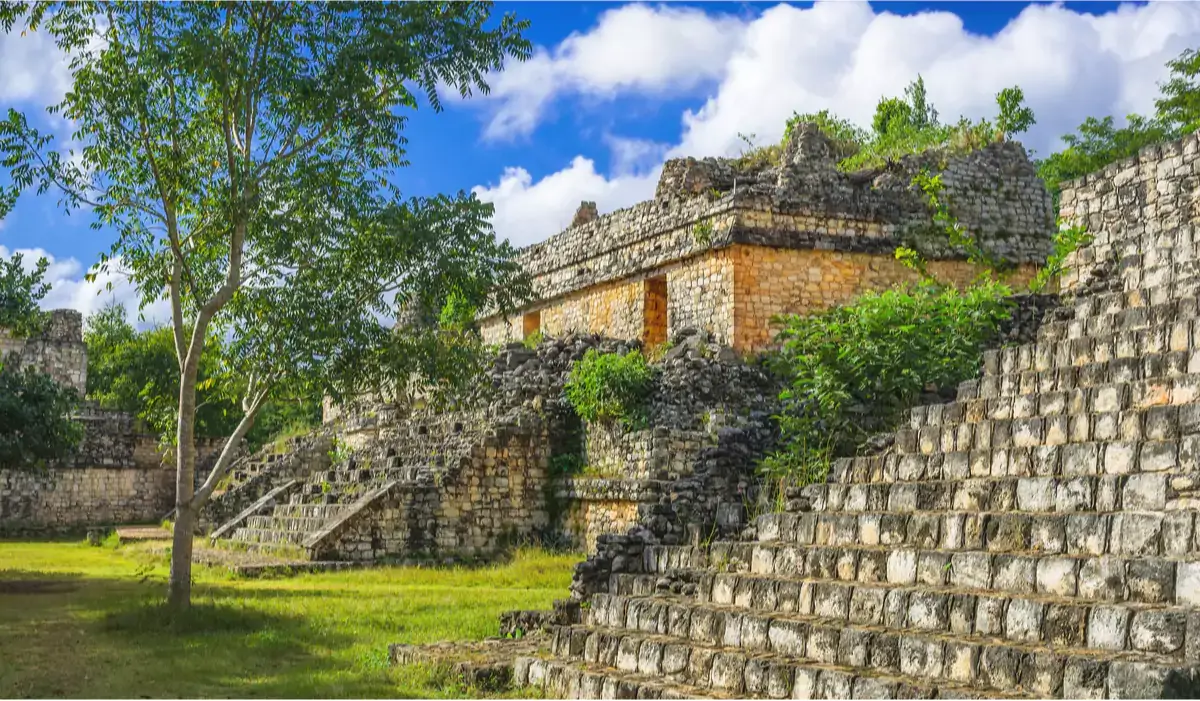
Ek Balam, a more recently popularized site, allows for an intimate encounter with Mayan culture. The highlight here is the Acropolis, a large pyramid that houses the tomb of Ukit Kan Le’k Tok’, a powerful ancient king. The beautifully preserved sculptures and carvings give a glimpse into the artistic talent of the Maya.
6. El Rey: The Kingdom of the Mask

Situated in the heart of Cancun’s hotel zone, El Rey is often overlooked by beachgoers, yet it offers a compelling glimpse into the daily life of the Maya. It’s known for its numerous platforms and structures as well as for the abundant iguanas that have taken over the Mayan ruins Yucatan peninsula.
7. Muyil: A Peek into the Sian Ka’an Biosphere Reserve
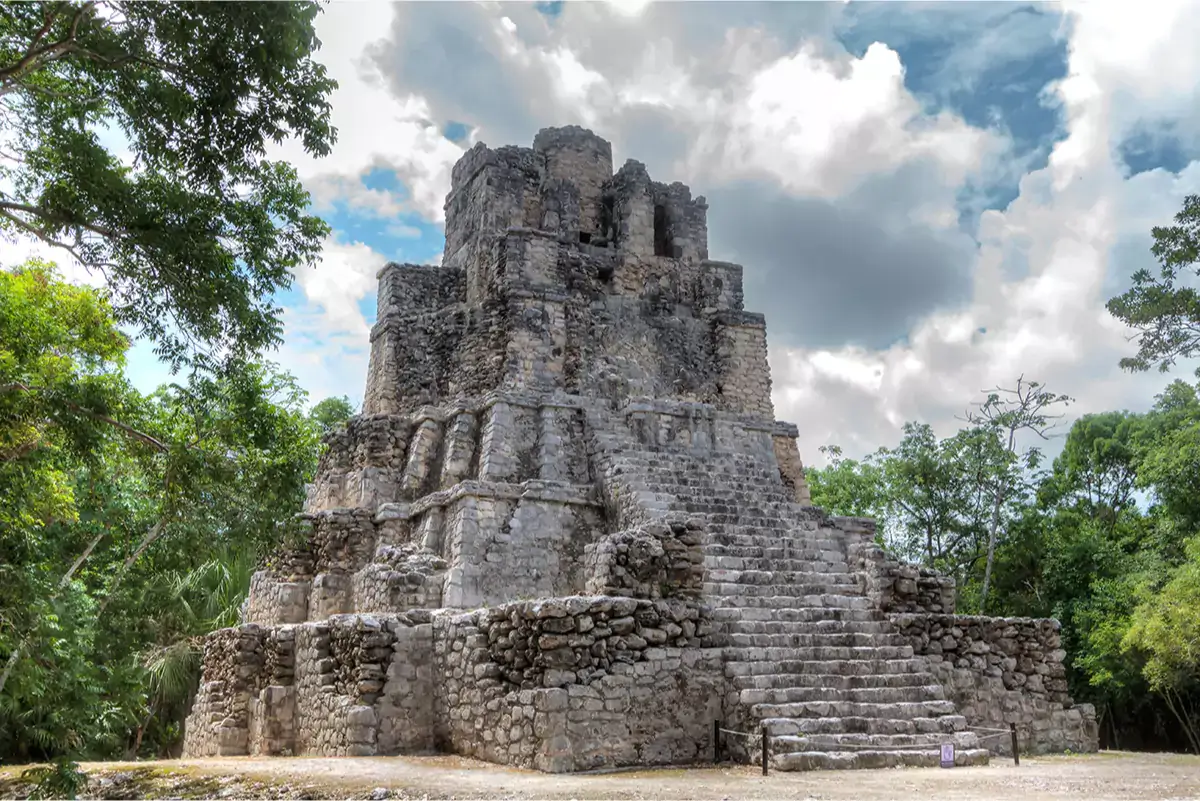
In the middle of the Sian Ka’an Biosphere Reserve, Muyil is one of the oldest and longest-inhabited ancient Maya sites. It’s a serene and relatively undisturbed place, and its main structure, El Castillo, offers a beautiful view of the lagoon and the extensive network of trade routes the Maya established.
8. Dzibilchaltún: The Place Where There Is Writing on the Stones
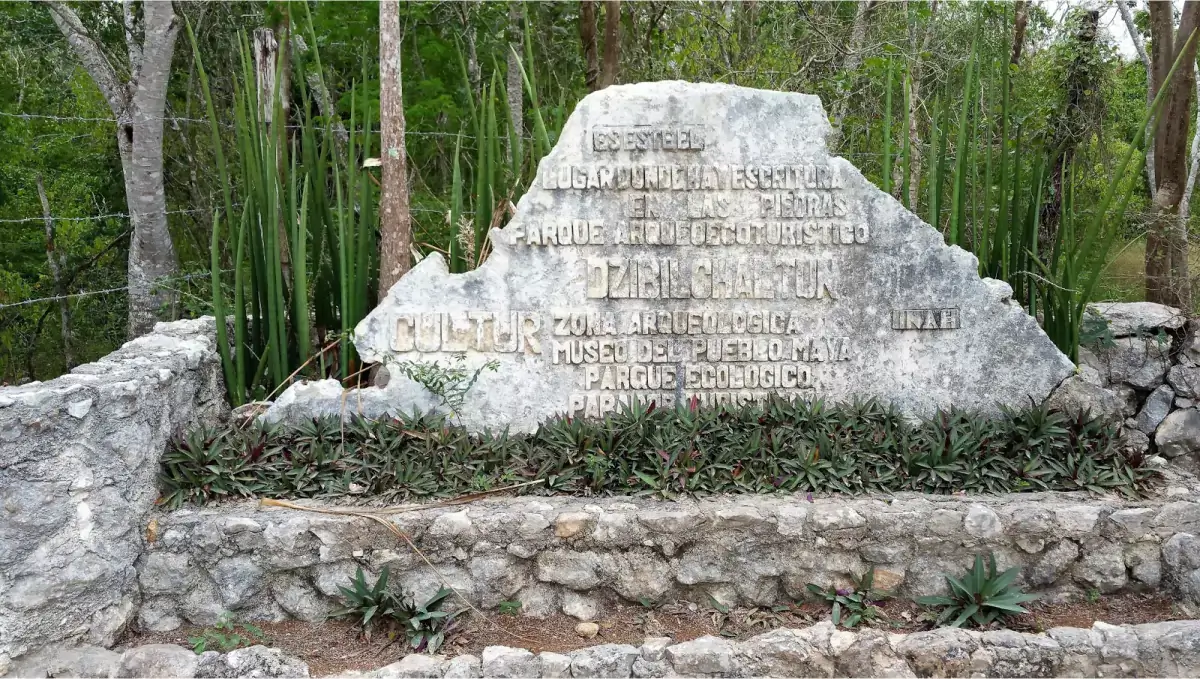
Dzibilchaltún is not as vast as some other sites, but it is home to one of the largest concentrations of Maya structures. The Temple of the Seven Dolls is named after the seven small effigies found when archaeologists in the 1950s discovered the temple. The temple aligns with the sun during the spring and autumn equinoxes, creating a breathtaking spectacle.
9. Mayapan: The Last Capital of the Mayan Civilization

Often described as a smaller version of Chichen Itza, Mayapan was the political and cultural capital of the Maya in the Yucatan after the decline of Chichen Itza. The Temple of Kukulcan here is a smaller replica of the one in Chichen Itza, and the site offers a more undisturbed experience, with fewer tourists.
10. Izamal: The City of Hills
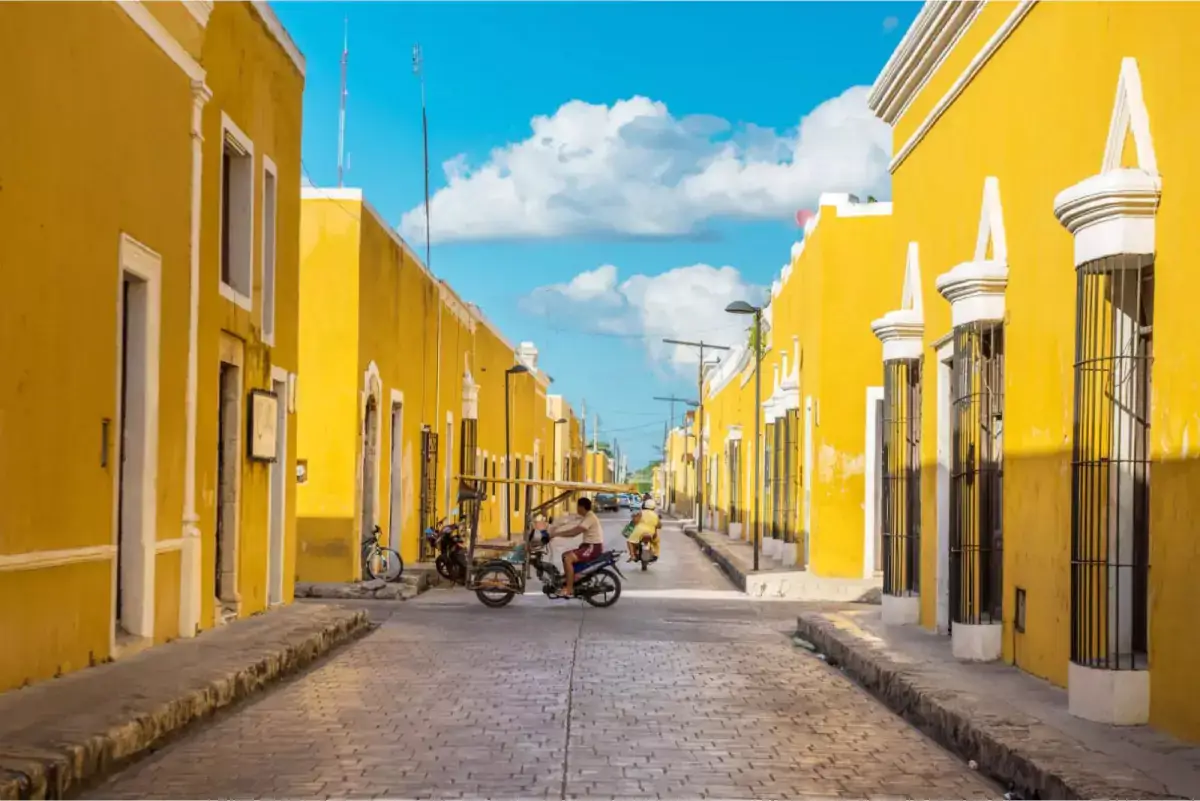
Izamal is a unique site, blending the colonial history of Mexico with its ancient past. Known as “The City of Hills,” it’s actually made up of the remains of ancient pyramids. The Kinich Kak Moo Pyramid, dedicated to the sun god, is one of the largest structures in Mesoamerica.
Practical Tips for Visiting Mayan Ruins
Exploring the ancient best Mayan ruins in the Yucatan Peninsula is a journey through time, history, and culture. However, to make the most of your exploration, here are some practical tips to ensure your adventure is as enriching as it is trouble-free.
1) Best Time to Visit
The Yucatan Peninsula can be very hot, especially from May to September. To avoid the midday heat, it’s wise to visit the ruins early in the morning or later in the afternoon. These times also tend to be less crowded, offering a more serene experience. The winter months, from December to February, provide cooler temperatures and are considered the peak season for visiting.
2) Cultural Etiquette and Preservation
While the ruins are fascinating, they are also culturally and historically significant. It’s important to respect these sites by not climbing on restricted structures, not defacing the ruins, and following all posted rules. Always stay on marked paths and avoid touching carvings or taking any artifacts, no matter how small. Remember, these Mayan sites in Yucatan are precious and irreplaceable.
3) Navigating Through the Ruins: Guides and Tours
Many ruins are vast and complex, and it’s easy to miss out on significant details or historical context when exploring on your own. Hiring a local guide can greatly enhance your experience. Guides offer valuable insights into the history, architecture, and cosmology of the Mayan people. They can also take you to less-visited sections of the ruins that you might otherwise overlook.
4) Staying Hydrated and Protected
The Yucatan sun can be intense, and many of the ruins have little to no shade. It’s crucial to bring plenty of water, wear sunscreen, and don light, breathable clothing to protect yourself from sunburn and heatstroke. A hat and sunglasses are also advisable.
5) Photography and Equipment
Most Mayan ruins allow photography for personal use, but flash photography and tripods may be restricted, as they can be disruptive or cause damage. Always check the site’s photography policy before your visit. If you plan to bring a professional camera or drone, you might need special permission or a permit.
6) Accessibility
Some Mayan ruins are more accessible than others. If you have mobility issues, research beforehand to determine if the site is suitable for you. Some sites offer walkways and ramps, while others may be challenging to navigate for those with limited mobility.
7) Insect Repellent
The jungles of Yucatan are home to mosquitoes and other insects, especially during the rainy season. Use an effective insect repellent to protect against bites and the diseases they can carry.
Following these practical tips will help ensure that your visit to the Mayan ruins is an adventure that’s both memorable and respectful of the heritage sites.
Wrapping Up
In the verdant embrace of the Yucatan Peninsula lie the magnificent Mayan ruins, where each stone tells a story and every pathway leads to a bygone era of astronomical mastery and architectural wonder. These ancient edifices are not just remnants of history; they are beacons of human achievement, reflecting a civilization that continues to captivate the imagination. As the sun traces the same arcs in the sky once worshipped by the Maya, visitors are reminded of our shared lineage under its glow, binding us to these ruins with threads of curiosity and reverence. In witnessing these grand monuments, we do not simply observe the past; we partake in a dialogue with history, one that endures beyond the quiet of fallen walls and the whispers of the age-old jungle.
So, with H2OH, book a Puerto Morelos boat rental and make the best out of your trip to the Mayan Ruins!

